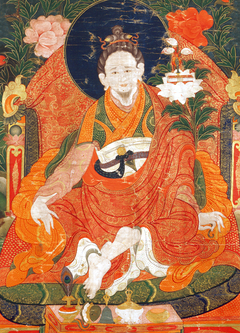Jigme Lingpa Series
English (108) | Deutsch (17) | Español (12) | Français (20) | Português (4) | Italiano (1) | 中文 (5) | བོད་ཡིག (108)
A series of texts by and about the great Dzogchen master Rigdzin Jigme Lingpa (rig 'dzin 'jigs med gling pa, 1730–1798), who revealed the Longchen Nyingtik (klong chen snying thig) collection.
Aspiration Prayers
Biography
Calling the Guru from Afar
Catalogues
Commentaries
Dharma Protectors
Dzogchen
revealed by Jigme Lingpa
Empowerment
Empowerment Rites
Fire Offering
Fulfilment
Guru Yoga
History
Longchen Nyingtik
Ngöndro
arranged by Dodrupchen Jigme Trinle Özer
Offering
Pilgrimage
Practices
Praise
Prayers
Prophecy
revealed by Jigme Lingpa
Sādhanas
revealed by Jigme Lingpa
The Sealed Quintessence: The Innermost Secret Guru Practice of the Heart-Essence of the Vast Expanse
revealed by Jigme Lingpa
